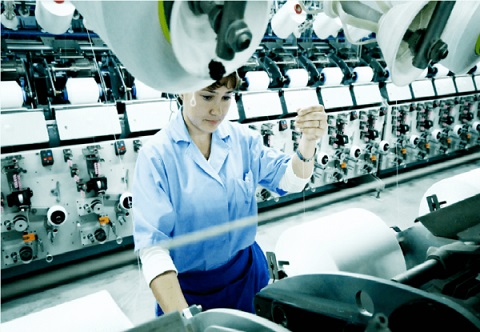
Did you know: 640,000 tons of abandoned, lost and discarded fishing nets, lines and traps are left in the world’s oceans each year, endangering hundreds of thousands of whales, dolphins, sharks, seals, turtles and birds annually.
Polyestertime publishes news on polymers, automotive, events, crude oil, textile, bioplastics, mechanical and chemical recycling etc.

Why Aquafil is Cleaning Up the World’s Oceans and Seas

Did you know: 640,000 tons of abandoned, lost and discarded fishing nets, lines and traps are left in the world’s oceans each year, endangering hundreds of thousands of whales, dolphins, sharks, seals, turtles and birds annually.
Italy’s Aquafil Group is doing its part to give old fishing nets a new lease on life as Econyl yarn, cleaning up waterways and helping to preserve natural resources. But as Giulio Bonazzi, chairman and chief executive of Aquafil, explained to a sold-out edition of EcoSessions recently in New York City, collecting fishing nets is a lot more complicated than it appears.
“We had to first convince farmers not to throw away fishing nets,” he said, noting that Aquafil had to start paying them. “Then we had to create reverse logistics. And because we were importing fishnets into Slovenia, where our recycling regeneration plant is—which by the way is a beautiful country that’s very careful to the environment—we had to convince the country to let us import garbage from all over the world.”
On top of that, most nets are covered with a copper coating to prevent the growth of algae so they will stay clean for longer. This has to be removed before the nets can be recycled and, in some cases, before they can even be transported.
“Today I believe that around Europe we are recycling if not 100 percent then a good 80 percent to 90 percent of fishing nets from farming,” Bonazzi said, noting that as many as 70 percent of all fishing nets are made with nylon 6 fibers. “We’re also importing fishing nets from Canada, from Central and South America, from Middle Eastern areas. Sometimes they call us from New Zealand and Australia. Wherever fish farming activities are important, we are able to take back those nets.”
However, he added, “The more material we find, the more we can grow our sales. In this case it is not difficult to sell, it is difficult to produce—to collect, to organize the reverse logistics and then to invent the technology to recycle.”
Bonazzi dove deep into the science at EcoSessions, here’s a high-level explanation of the process: old fishing nets collected worldwide are transported to Aquafil’s pre-treatment plant in Ajdovscina, Slovenia, where nylon 6 is separated from other materials, then put into a grinder or shredder in order to easier manipulate the material. The waste from the treatment facility is then ready to be depolymerized and made into a new polymer that’s exactly like a virgin one for the creation of new products.
Basically, Econyl fibers have the exact same properties as nylon 6 made from fossil resources but ensure a brighter future for generations to come. Furthermore, for every ton of fishing nets recovered and regenerated, Aquafil produces enough yarn for 26,000 pairs of socks made from a fabric blend that’s 50 percent Econyl. Speedo, Outerknown and Levi’s are just three apparel brands using Econyl fibers in their designs.
“If you are so brave and so good to design a piece of fabric or clothing which is, I don’t want to say 100 percent nylon 6 but with a high content of nylon 6, and you give it back to me, I will give you back the raw materials to make this product again and again and again.” Bonazzi said.
When moderator Kate Black, founder and editor in chief of Magnifeco.com, asked why he does what he does, Bonazzi’s answer was simple: “Because I like it, no doubt.”
He added, “When you work and when you’re doing something that is good you feel better and the motivation grows, and then also if you’re successful you find even more motivation.”
That being said, if the market demand isn’t there, the company can’t sell, and if the company can’t sell, it’s difficult to grow and create new jobs and R&D.
“A lot of things have been done and there are a lot of things left to develop. It is so exciting to be in the business,” Bonazzi said. “The target is to arrive at the perfect system, no other choice, because if we don’t change our way of leading, of manufacturing, of consuming, shortly we will be without resources, without the environment, without anything for our future generations.”